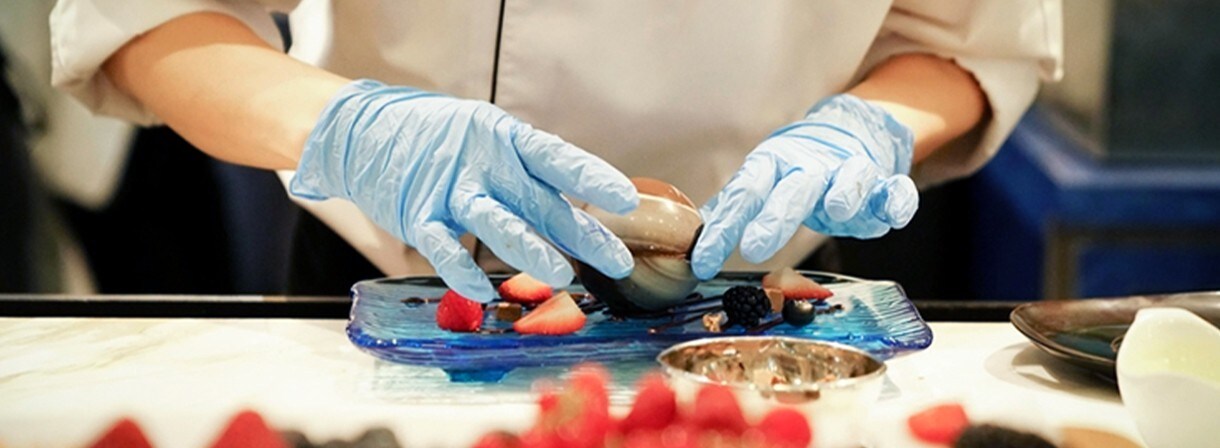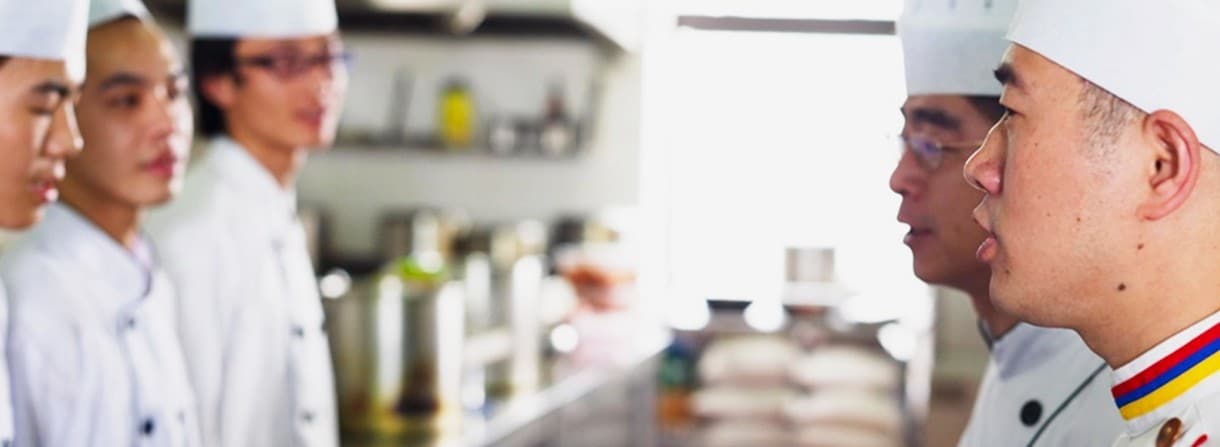As Singapore remains at DORSCON Orange due to the coronavirus (COVID-19), food establishments are being hit hard. At this time, your diners deserve to know that your restaurant is taking all precautions to ensure the cleanliness of your food, utensils and kitchen—and this starts with good front of house (FOH) and back of house (BOH) practices.
The examples below are some practices that local restaurants are currently adopting. You can take reference and implement some of these best practices in your dining establishment, or even improve on them.

Keep those hands clean with sanitisers
Placing a bottle of hand sanitiser at the restaurant entrance is one of the simplest, yet most effective ways to show diners that you care about the cleanliness of your restaurant; so much so that all germs should be eradicated at the front door. As an extra precaution, you can also leave chlorhexidine wipes at each table within easy reach.
Tell diners what you’re doing to keep them safe
Be vocal about the measures you’re taking to keep the virus at bay. Place posters and signs at the entrance of your restaurant informing diners that all staff members have their temperature checked several times a day, are not allowed to work when they are not feeling well, along with any other safety measures.
Provide masks to staff
All FOH and BOH staff should wear masks throughout the day. The masks serve the very real purpose of stopping any staff member who may be unknowing carriers from spreading the virus, while also reassuring diners that their food is “extra protected” during this period.
Protect your utensils
Are your restaurant’s utensils left in a communal area for diners to pick up? Consider placing them in bags or covering them instead, so any stray particles don’t end up landing on the utensils.

Taking Charge in the Kitchen: BOH Practices to Reassure Diners
Your kitchen may be out of sight, but that doesn’t mean it’s out of mind. Boost diners’ confidence that your chefs and kitchen staff are just as committed to keeping diners safe, as their FOH colleagues. These are some best practices that you can implement in your BOH.
Set (and enforce) personal hygiene standards
Basic hygiene standards that every kitchen staff should adhere to include:
- A clean uniform that should be only used in the kitchen
- Disposable gloves and a full apron for different prep stations
- Non-slip, fully-covered shoes
- Neat hair
- Short, clean fingernails and clean hands that are washed with soap frequently
- A plastic chef mask to prevent any droplets from contaminating food
- A clean bill of health (i.e. anyone who isn’t feeling well must be sent to home or to a doctor)
Cooking of food
During this period, it’s especially important to cook food properly and safely. Prepped food should be cooked as soon as possible to avoid being left on the counter at room temperature, exposed to germs.
Always cook food at its required minimum temperature. And if food needs to be reheated, ensure that the item reaches its required temperature for at least 15 seconds.
Safe food sourcing and preparation
To ensure that your food is fresh and free from germs and viruses, only source your ingredients from credible suppliers. Chefs must insist that all surfaces and tools (including knives, equipment and machines) are cleaned thoroughly before usage. And of course, raw and cooked meats should never be prepared or stored together.
Also, when preparing frozen food, always cook thawed food within 2 hours, and never refreeze anything.
Washing vegetables
To further align your restaurant with HACCP (hazard analysis critical control point) standards, it’s advisable to use a vegetable washer or sanitiser when washing vegetables. While this isn’t common practice and may add to your prep time, it’ll help you stay safe and keep your diners free from germs during this uncertain period.
While some of these practices are recommended specifically during this period of unease with the coronavirus, others should already be a part of your restaurant’s regular practices. If not, this is an ideal time to implement (and keep) these practices, so your diners can count on your restaurant’s quality and dedication to food safety, all year round.